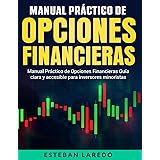Are you struggling to find a crypto trading strategy that truly works? Many traders feel overwhelmed. They often juggle countless indicators. This can lead to frustration and losses. The video above introduces a simplified approach. It focuses on identifying trends. This method aims for long-term success. It promises an impressive 94% win rate. This article will expand on this powerful, indicator-free trend trading strategy. It combines market structure with multi-timeframe analysis. You can use it across various cryptocurrencies. This includes Bitcoin and other digital assets.
Simplifying Your Crypto Trading Strategy: Focus on Market Structure
Most traders complicate their approach. They use too many indicators. This often leads to conflicting signals. Such complexity hinders profitability. A simple crypto trading strategy focuses on core principles. Market structure is fundamental. It reveals underlying market psychology. Prices move in distinct patterns. Recognizing these patterns is key. This strategy bypasses complex tools. It uses raw price action instead. This helps avoid common trading mistakes.
Understanding Uptrends: Higher Highs and Higher Lows
An uptrend signals bullish momentum. Prices consistently rise. This pattern is easy to spot. Look for higher lows and higher highs. Each dip finds support at a higher level. Each rally pushes past the previous peak. This indicates strong buying pressure. Traders call this a healthy uptrend. It suggests an asset is gaining value. Entering long positions makes sense here.
Decoding Downtrends: Lower Highs and Lower Lows
Conversely, a downtrend shows bearish strength. Prices steadily decline. This pattern involves lower highs and lower lows. Each bounce fails to reach the prior high. Each drop breaks below the previous low. This signifies strong selling pressure. Such a trend suggests an asset is losing value. Short selling positions become more attractive. Understand these basic movements. They form the backbone of this trend-following method.
Recognizing Consolidation: Sideways Price Action
Not all markets trend. Sometimes, prices move sideways. This is called consolidation or ranging. Bitcoin, for example, often enters these phases. The video notes Bitcoin traded sideways for about 50 days. This occurred between $27,000 and $31,000. During consolidation, there is no clear direction. Buyers and sellers are in balance. Trends are difficult to establish. Avoid entering trades during strong consolidation. Wait for a clear breakout. This minimizes risk and false signals. This strategy works best in trending markets.
Mastering Multi-Timeframe Analysis for Effective Entries
Different timeframes tell different stories. A crypto trading strategy needs this insight. Combining multiple views gives clarity. It reveals both the big picture and micro-movements. This systematic approach is vital. It prevents trading against the primary trend. Many beginner traders make this error. They focus only on short-term charts. This often leads to missed opportunities. It also increases potential losses. Always start with the largest timeframe. Then, drill down to smaller ones. This hierarchical analysis is crucial.
The Weekly Timeframe: Identifying the Overall Market Direction
The weekly chart is paramount. It shows the market’s strongest structures. You identify the primary trend here. Is the market bullish or bearish? This frame answers that question. It offers a broad directional bias. For example, Bitcoin’s weekly trend dictates long-term positions. The video highlighted a significant weekly downtrend. It saw prices fall from $68,000 to $15,400. Later, it broke into a weekly uptrend. Always align your trades with this dominant force. This improves your odds significantly. It forms the base of a reliable trend trading strategy.
The Daily Timeframe: Confirming Momentum and Strength
After the weekly, examine the daily chart. This confirms the trend’s momentum. It provides a more refined view. Does the daily trend match the weekly? Consistency is what you seek. If both are bullish, the trend is strong. If they diverge, caution is warranted. A daily uptrend might show higher lows. It also displays higher highs. This reinforces a bullish weekly outlook. Bitcoin’s daily chart often mirrors its weekly. This provides clear directional conviction.
The 4-Hour Timeframe: Spotting Short-Term Shifts and Consolidation
The 4-hour chart reveals short-term dynamics. It can highlight emerging changes. This timeframe shows whether daily momentum is holding. It also identifies consolidation periods. The video pointed out Bitcoin’s 4-hour consolidation. This occurred while weekly and daily charts were bullish. A consolidating 4-hour chart means indecision. No clear trend exists there. It’s often a sign of accumulation or distribution. This suggests patience. Wait for a clear break before acting. This protects capital from choppy markets.
1-Hour and 15-Minute Timeframes: Precision Entry Points
These smaller timeframes are for execution. The 1-hour and 15-minute charts are critical. They help pinpoint exact entry and exit points. The overall trend defines your bias. These smaller charts provide the timing. Look for a trend break on the 1-hour. Then confirm on the 15-minute. If the 1-hour uptrend breaks downward, consider a short. If it breaks upward, look for a long. This granular focus reduces risk. It helps achieve better fill prices. This is the final step in this crypto trading strategy.
Executing the Trade: From Signal to Profit Management
Identifying trends is one part. Executing trades is another. This strategy prioritizes precision. It minimizes impulsive decisions. Every trade needs a clear plan. This includes entry, stop-loss, and take-profit. Without these, trading becomes gambling. A disciplined approach is essential. This ensures consistency over time. It protects capital effectively. This is vital for long-term profitability.
Spotting Entry Signals: The Trend Break Confirmation
Entries occur on smaller timeframes. You wait for a trend break. For example, on a 1-hour chart, an uptrend might form. Then, it suddenly breaks lower. This signals a potential short entry. Set an alert at the break point. The video suggests setting alerts around $29,200. This is for a short trade. This immediate confirmation is key. It acts as your green light. Enter your position when the alert triggers. This proactive approach saves time. It prevents missed opportunities.
Setting Realistic Stop-Losses: Protecting Your Capital
A stop-loss is non-negotiable. It limits potential losses. Never trade without one. Place your stop-loss logically. For a short trade, set it above the previous high. The video suggests around $29,500. This example creates a clear risk parameter. Your stop-loss protects your capital. It helps you manage risk effectively. Without it, one bad trade can ruin accounts. Discipline in stop-loss placement is crucial. This forms a core part of any robust trend trading strategy.
Targeting Take-Profits: Understanding Risk-Reward Ratio
Take-profit levels are equally important. They lock in your gains. Use a favorable risk-reward ratio. The video recommends 1:2 or 1:3. This means risking $1 to make $2 or $3. For instance, risk $500 to potentially gain $1,000. This example uses a 1:2 ratio. The take-profit could be around $28,800. A positive risk-reward ratio is vital. It allows for profitability. Even with a win rate below 50%. This strategy aims for high win rates. But strong risk management is always primary. It ensures sustainable trading. This helps you consistently grow your capital.
The Undeniable Importance of Risk Management
Successful trading relies on risk management. It is more critical than any single strategy. Even a high win rate means nothing without it. Proper risk management protects your capital. It ensures you can trade another day. It allows for inevitable losing trades. Every trader experiences drawdowns. A sound risk plan minimizes their impact. Never risk more than a small percentage. Many experts suggest 1-2% of total capital per trade. This rule helps avoid significant losses. It maintains emotional stability during volatile periods.
Psychology and Capital Preservation
Emotion often sabotages traders. Fear and greed are powerful forces. Risk management provides a framework. It helps control these impulses. Knowing your maximum loss per trade brings calm. It allows for rational decision-making. Your capital is your livelihood. Preserving it is your primary goal. Focus on consistent, small gains. Avoid chasing large, risky profits. This disciplined mindset is key. It separates professional traders from amateurs. Adopt this crucial element. Make it part of your routine. It reinforces every aspect of your crypto trading strategy.
Applying the Strategy: A Bitcoin Example
Let’s recap with Bitcoin’s price action. The strategy is practical. It’s not just theoretical. Start with the weekly timeframe. The video showed Bitcoin’s previous downtrend. It plummeted from $68,000 to $15,400. This was followed by a clear weekly uptrend. This uptrend is currently strong. It forms our long-term bullish bias. Next, move to the daily chart. Bitcoin’s daily timeframe also showed bullishness. It displayed clear higher lows and higher highs. This confirms the weekly momentum. This reinforces our conviction. It tells us to favor long positions overall.
Navigating Shorter Timeframes with Caution
Now, shift to the 4-hour chart. The video noted Bitcoin was consolidating here. Prices were ranging between $27,000 and $31,000. This lasted for approximately 50 days. This sideways action provides caution. It means no clear trend for short-term trades. We would wait for a breakout. Then, we observe the 1-hour and 15-minute charts. If the 1-hour trend breaks upward, we look for a long. If it breaks downward, we consider a short. The example showed a potential short entry at $29,200. This occurs if the 1-hour trend breaks down. A stop-loss would be at $29,500. A take-profit at $28,800. This sets a 1:2 risk-reward. This structure ensures clear entry and exit points. It’s a comprehensive approach to a trend trading strategy.







